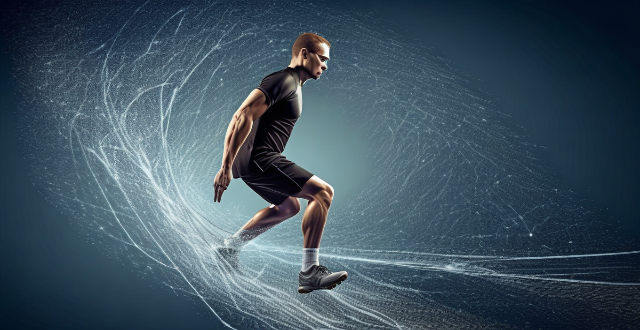GPS technology has transformed sports monitoring and analysis by providing accurate data on athlete movements, speed, distance, and other performance metrics. Its primary uses include tracking athlete movements during training or competition, measuring speed and distance, and analyzing various performance metrics such as heart rate and power output. The benefits of GPS in sports monitoring include improved performance, injury prevention, effective pacing strategies, personalized training plans, and data-driven decision making. Examples of GPS use in sports monitoring include football (soccer), cycling, swimming (with wearable devices instead of GPS), and running.

GPS in Sports Monitoring and Analysis
Global Positioning System (GPS) technology has revolutionized the way we monitor and analyze sports. It provides accurate data on an athlete's movements, speed, distance covered, and other relevant metrics that can be used to improve performance. In this article, we will discuss how GPS is used in sports monitoring and analysis.
Tracking Athlete Movements
One of the primary uses of GPS in sports monitoring is to track the movement of athletes during training or competition. This allows coaches and trainers to analyze their techniques, identify areas for improvement, and develop strategies to enhance their performance.
Benefits of Tracking Athlete Movements
- Improved Performance: By analyzing the data collected from GPS tracking, coaches can identify areas where athletes need to improve their technique or adjust their strategy. This leads to better overall performance.
- Injury Prevention: GPS tracking can also help prevent injuries by identifying patterns of movement that may lead to strain or damage. Coaches can then modify training programs to reduce the risk of injury.
Measuring Speed and Distance
Another important use of GPS in sports monitoring is measuring an athlete's speed and distance traveled. This information is crucial for assessing an athlete's endurance, pacing, and overall fitness level.
Benefits of Measuring Speed and Distance
- Pacing Strategies: By analyzing an athlete's speed and distance data, coaches can develop effective pacing strategies for different events or races. This helps athletes conserve energy and perform at their best when it matters most.
- Training Efficiency: Measuring speed and distance allows coaches to evaluate the effectiveness of training programs and make adjustments as needed. This ensures that athletes are getting the most out of their workouts.
Analyzing Performance Metrics
GPS technology also enables coaches and trainers to analyze various performance metrics, such as heart rate, calories burned, and power output. These metrics provide valuable insights into an athlete's physical condition and help optimize training programs.
Benefits of Analyzing Performance Metrics
- Personalized Training Plans: By analyzing performance metrics, coaches can create personalized training plans that cater to each athlete's individual needs and goals. This leads to more effective training and better results.
- Data-Driven Decision Making: With access to detailed performance data, coaches can make informed decisions about an athlete's training regimen, nutrition plan, and recovery process. This helps maximize an athlete's potential and achieve success in competitions.
Examples of GPS Use in Sports Monitoring
Now that we have discussed the various ways GPS is used in sports monitoring and analysis, let us look at some examples of its application in different sports:
Football (Soccer)
In football, GPS technology is used to track player movements during matches and training sessions. This data helps coaches analyze player performance, identify areas for improvement, and develop effective game plans.
Cycling
Cyclists often use GPS devices to measure their speed, distance, and other performance metrics during training rides and races. This information helps them optimize their pacing strategies and improve their overall cycling performance.
Swimming
GPS technology is not typically used in swimming due to the underwater environment. However, swimmers can benefit from wearable devices that measure stroke rate, lap times, and other performance metrics during training sessions. This data helps coaches develop personalized training plans and improve technique.
Running
Runners often use GPS watches or apps on their smartphones to track their runs, including distance covered, pace, and route taken. This information helps them monitor their progress over time and set new goals for themselves. Additionally, coaches can use this data to evaluate an athlete's endurance levels and adjust training accordingly.